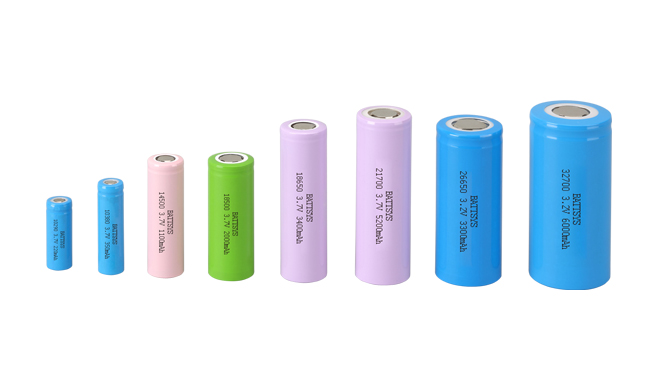What are the advantages and disadvantages of cylindrical batteries, square batteries, and pouch batteries?
Lithium batteries can be divided into cylindrical batteries, square batteries, and soft pack batteries according to their packaging forms. Although square batteries are currently the mainstream of power batteries in the market, each of the three types of batteries has its own advantages and disadvantages.
In terms of cylindrical batteries, Tesla is impressive in the field of power batteries. From 18650 to 21700, to the upcoming 46800 battery, Tesla is basically leading the trend.
Taking the 18650 battery as an example, 18 represents the diameter of the battery, 65 represents the height of the battery, and 0 represents a cylindrical battery. Therefore, 27100 and 46800 are naturally the same.

18650 battery is the earliest developed form of lithium battery packaging, and by 1992, cylindrical batteries had already made significant progress. Initially, 18650 batteries were mostly used in digital products.
Due to its first mover advantage, cylindrical batteries are the most mature form of packaging technology. Specifically, 18650 has a higher yield rate and the cost of PACK can be effectively controlled.
Compared to square hard shell batteries, cylindrical batteries have lower space utilization efficiency. However, cylindrical batteries can utilize the gap in the middle of the cylinder to circulate coolant, which is also considered a form of space utilization.
In terms of drawbacks, the disadvantages of 18650 cannot be ignored. Firstly, the 18650 battery adopts a metal shell and a small capacity of individual cells. In order to meet the capacity demand, it can only be compensated for by a significant increase in quantity. Therefore, a larger quantity requires higher requirements for BMS battery management system.
Square batteries are currently the most widely used batteries in the lithium-ion field. At present, a series of mainstream new energy vehicle companies in China, such as BYD, Geely, and NIO, all use square hard shell batteries, while international traditional manufacturers such as Audi and BMW also use square battery solutions.
One of the most important reasons for the wide application of square batteries is that they have more suppliers and relatively low technical difficulty. The vast majority of domestic battery suppliers choose to develop square batteries. For example, well-known suppliers such as CATL, BYD, and Guoxuan High tech are important suppliers of square hard shell batteries.
In addition to having a wide range of suppliers, square batteries also have a higher degree of customization. At the same time, the space utilization rate of square batteries is relatively higher than that of cylindrical batteries. However, the problem is that the hard protective shell on the outer layer will significantly increase the overall weight of the battery pack. Therefore, similar ideal manufacturers in China, such as ONE, have started using aluminum as the outer protective shell to effectively ensure lightweight and improve battery energy density.
At the same time, the unit capacity and volume of square batteries are larger, and the number of units naturally decreases, so the requirements for BMS battery management systems are also lower. At present, the most representative square hard shell motor is the NCM811 battery launched by CATL.
The disadvantage of square batteries is that they have a high degree of customization freedom, which leads to inconsistent manufacturing processes and highlights the differences between each battery. Compared to cylindrical batteries, square hard shell batteries have higher requirements for cooling system layout. However, with the introduction of national policies on battery standards, the differences in square batteries will also decrease in the future.
Although soft pack batteries are becoming increasingly used in the automotive market, we are not unfamiliar with them because lithium batteries in mobile phones are mostly packaged in soft pack batteries.
The outer shell of the soft pack battery is made of aluminum-plastic film material, which is lighter in weight compared to square and cylindrical batteries that use aluminum shells. At the same capacity, the weight of a soft pack battery is 20% lighter, while at the same weight, the capacity of a soft pack battery is 50% higher than that of an aluminum shell battery.
So the theoretical energy density of soft pack batteries is higher than that of square and cylindrical batteries. In terms of drawbacks, soft pack batteries currently need to address issues such as high standardization and cost, heavy reliance on imported high-end aluminum-plastic films, and poor consistency.
The market believes that soft pack batteries have great potential and will become the mainstream in the future.
E-Mail: inquiry@fentbattery.com
Tel: 0086 20 3901-1403
Address: No.3, Dongli Road, Xili, Dongyong Town, Nansha District, Guangzhou City, China
Copyright@ China lithium ion battery manufacturers & suppliers & producers | Lithium Battery Factory & Company-BATTSYS Sitemap